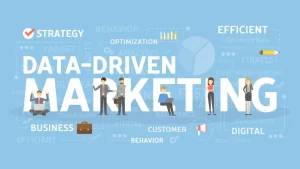
Navigating the Digital Maze: Modern Communication Channels
In today’s hyperconnected world, the evolution of communication channels has transformed the way individuals, businesses, and societies interact. The digital era has introduced a myriad of platforms and tools that have reshaped traditional communication methods. From instant messaging apps to social media networks, the choices are vast and ever-growing. In this article, we explore the key communication channels in the digital age and their significance.
Email remains one of the most enduring and widely used communication tools. It offers a professional and structured medium for formal correspondence, making it indispensable for businesses. With advancements in email marketing and automation, it has also become a powerful tool for reaching target audiences with personalized messages.
Social media has revolutionized how people connect and share information. Platforms like Facebook, X (formerly Twitter), Instagram, and LinkedIn cater to different purposes, from casual interactions to professional networking. These platforms allow for real-time engagement, making them invaluable for businesses aiming to build brand loyalty and connect with customers.
Apps like WhatsApp, Telegram, and Messenger have redefined instant communication. Their ease of use, multimedia capabilities, and encryption features make them popular for both personal and business interactions. Companies are increasingly leveraging these platforms for customer support and marketing campaigns.
The rise of remote work has brought video conferencing tools like Zoom, Microsoft Teams, and Google Meet to the forefront. These tools enable real-time, face-to-face communication across distances, supporting everything from team meetings to virtual events.
Websites and blogs serve as foundational digital communication channels. They provide a centralized hub for information, allowing businesses to showcase their products, share news, and offer valuable content. Blogs, in particular, are effective for storytelling and establishing expertise in a niche.
Despite being one of the older digital communication methods, SMS (Short Message Service) and MMS (Multimedia Messaging Service) remain relevant. They offer a direct and immediate way to reach users, boasting high open rates. Bulk SMS services are especially effective for time-sensitive promotions and alerts.
Push notifications on mobile apps and web browsers provide a non-intrusive way to communicate with users. They are ideal for delivering updates, reminders, and personalized offers, ensuring continuous engagement with users.
Artificial intelligence is transforming digital communication. Chatbots and virtual assistants like ChatGPT enable automated, conversational interactions, enhancing customer service and operational efficiency. These tools can simulate human-like conversations, providing immediate responses and improving user experiences.
Each communication channel has its unique strengths and is suited to specific purposes. The choice of channel should align with the audience’s preferences and the nature of the message. Professional updates are best shared via email or LinkedIn, while casual promotions can thrive on Instagram or WhatsApp. Customer support benefits from instant messaging apps and chatbots.
While the digital era offers numerous opportunities, it also presents challenges such as information overload, cybersecurity threats, and maintaining authenticity in communication. Effective strategies, combined with a focus on user privacy and clear messaging, can help navigate these issues.
The digital era has democratized communication, offering countless ways to connect and share information. By understanding and leveraging the right channels, individuals and businesses can foster stronger relationships and achieve their goals in an increasingly digital world. As technology continues to evolve, staying adaptable and informed will be key to thriving in this dynamic landscape




